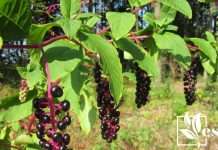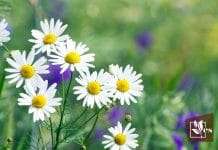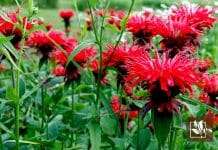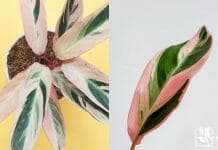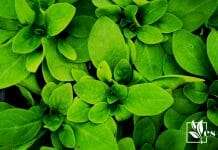Plants that look like fennel or Foeniculum vulgare of the Apiaceae family are not as hard to come by as you may think. If you are not careful, there is a high chance of mixing up a Feoniculum genus plant with a poisonous look-alike.
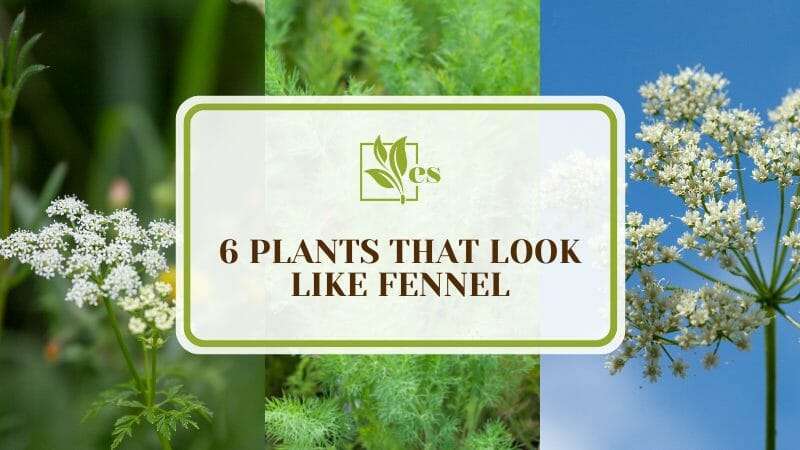
In this article, we will be going over the various plants that look a lot like fennel, so you are careful and more aware of what exactly fennel looks like in order to stay safe. Keep reading to find out about the plants that look like fennel.
JUMP TO TOPIC
List of Plants That Look Like Fennel
1. Deadly/Poison Hemlock
Deadly Hemlock is also known as poison hemlock. Unfortunately, this plant is commonly mixed-up with fennel. Staying true to its name, the deadly hemlock plant is extremely toxic to the human body.
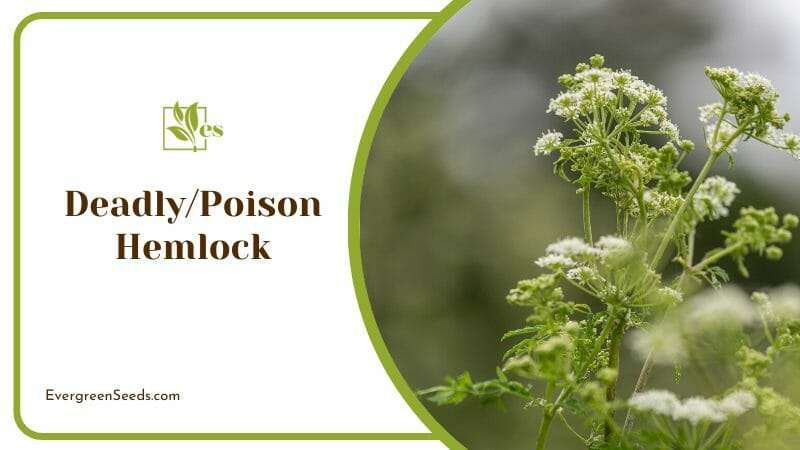
Consuming this plant would result in overstimulation of the nervous system, followed by paralysis. Other effects on the body include vomiting, hyperventilation, dizziness, and slowed and delayed rapid pulse, among other serious conditions.
Even the roots and the seeds are toxic, even more so than the leaves themselves. Hemlock can be hazardous when consumed, but it can also be harmful when inhaled or when it comes into contact with the skin. If you live on a farm or near a natural, grassy open space, then be mindful of poison hemlock.
Farmers must take care to ensure that the hay supplied to livestock is free of hemlock. In the battle of hemlock vs fennel, it’s better to always check first.
Hemlock poisoning is so potent that taking more than 150–300 milligrams of coniine is equivalent to six to – eight hemlock leaves.
Poison hemlock looks the same as fennel but a good way to tell them apart is by looking at the flowers. Fennel has yellow-colored flowers, and hemlock, on the other hand, has no flowers whatsoever.
Another tip is to trust your nose. Fennel has a nice, anise-like scent to them while hemlock has a distinct offensive odor. This tip alone should help you in recognizing fennel from the poisonous hemlock plant and poison hemlock look-alikes.
2. Dill
Next on the plants that look like fennel is dill. There are actually quite a few plants that look like dill. Dill is a relatively safer mistake to make compared to poison hemlock. If you do get the two mixed up, the most that will happen is that your dish will taste different from what you intended.
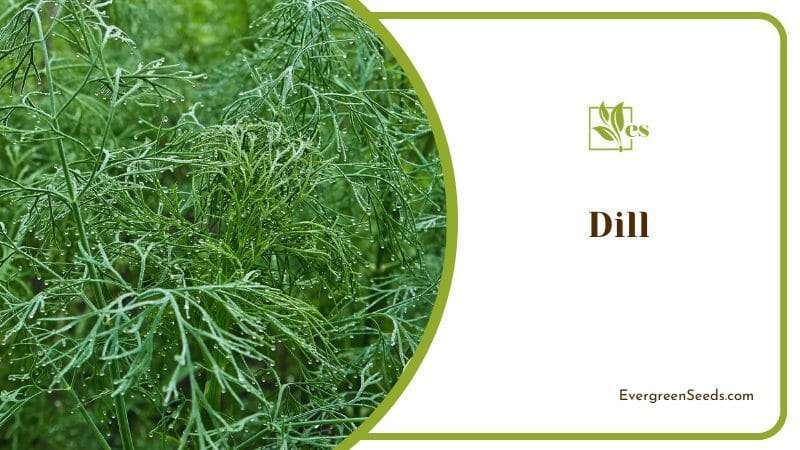
What makes this the most similar is that dill carries the same aniseed scent as fennel. This factor makes it that much harder to spot the difference between the two. However, there are some distinctions that a trained eye can spot.
One of these is knowing that fennel is a bit taller than the dill plant. Another way you can differentiate between the two is by knowing that a fennel plant branch will have more foliage compared to a dill branch which has sparse leaves.
The branch from a dill plant will also have faint traces of white lines along the branch itself. As for the leaves, dill leaves are a tad bit more tender than fennel leaves.
If you’ve got a vegetable garden and are looking to keep your dill from mixing in with your fennel, then a solid tip would be to plant these two at a distance from one another and mark where each one is by writing down the plant’s name on a piece of paper or a wooden popsicle stick. Also, both of them can grow in many types of soil, so be extra careful.
3. Anise
Anise is another plant that is quite similar to fennel. Here, not only do the plants resemble one another, but the scent is also the same between the two of them, making them almost identical in both appearance and scent.
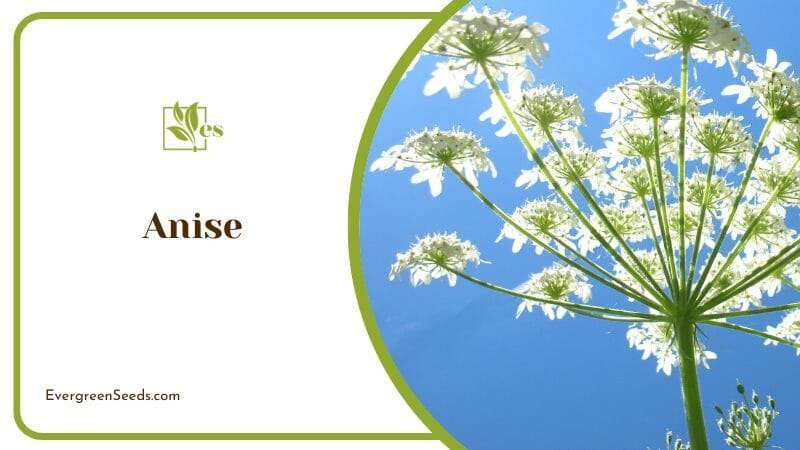
Anise and fennel also taste similar, but not quite the same. Fennel is used for its bulb, seeds, and leaves, as all of the plant is edible. Anise, on the other hand, is mainly planted for its dark seeds.
Anise seeds have a much more prominent, powerful flavor that resembles black licorice. Fennel seeds come on the milder side when compared to anise seeds in terms of flavor. They also are far less sweet and don’t give the same kick that anise seeds do.
One way you can differentiate between the two plants is by looking at the seeds. As mentioned before, anise seeds have darker seeds that have a much stronger scent than fennel.
Plus, it is important to note that anise seeds come from bushes that are grown specifically to obtain anise seeds. Fennel, on the other hand, has seeds that come from bulb-forming, short, tree-like plants.
In addition to this, anise seeds are tiny, hard, crescent-shaped, and range in hue from pale brown to drab green. Fennel seeds resemble Anise seeds but are smaller, oval-shaped, dried, and typically light green in color.
4. Wild Fennel
Wild fennel is a plant that may sound the same as fennel that grows in your garden, but there are differences between the two. Foeniculum vulgare, often known as garden fennel and undomesticated fennel, is the same plant. Yet distinctions can be made.
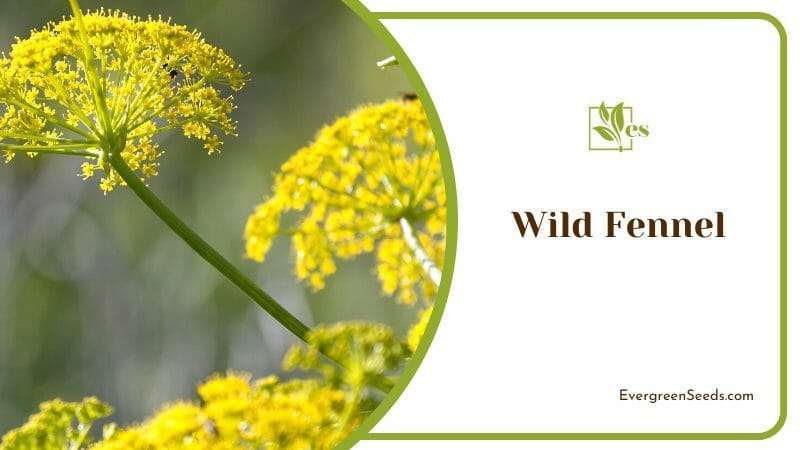
First and foremost, wild fennel does not have the bulb part but does have the same edible fronds and seeds.
Plus, compared to bulb fennel, the wild variety has a considerably stronger licorice flavor and scent. The seeds are also different as the wild variety has smaller seeds in comparison to the domesticated fennel that is present in your garden.
What is more, is that, unlike domesticated fennel, the wild type of fennel is grown in all kinds of places. Like most wild plants, it uses the environment to spread its seeds via wind and birds.
Additionally, domesticated fennel has a lifespan that repeats itself: it dies during the winter and regrows in springtime. The natural wild variety of fennel is persistent; it’s roots stay strong and upright no matter the weather.
The fennel grown in the wilderness is not toxic or poisonous at all. You cannot get fennel poisoning that may prove to be lethal, but it is always advised to be mindful of the things you consume, especially if it was grown in the wilderness.
5. Parsley
Parsley is a herb that is very popular in cooking aromatic dishes. The herb is a common ingredient in Middle Eastern, Central European, and American cuisine. This is why this common ingredient is present in most people’s vegetable and herb gardens.
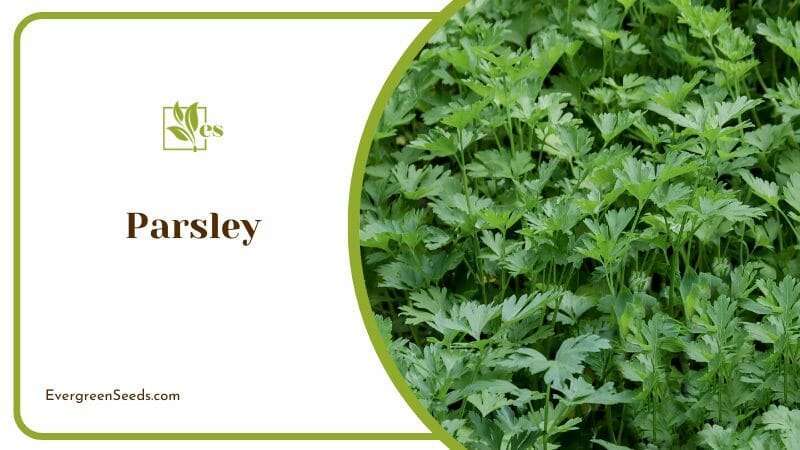
Parsley may not look entirely like fennel or its plant, but they do have some similarities between them. Fennel belongs to the parsley family. This is why they have similar, but not the same, appearances.
A key difference is in their growth cycles. Fennel has a perennial growth cycle, and parsley has a biennial. This means that parsley is a little less of a common plant than fennel, as it takes two years to complete its full growth cycle.
Parsley, of course, does not carry the same anise-like smell that fennel does. Additionally, while fennel has small, yellow-colored flowers, parsley sometimes has white-colored flowers. The parsley plant stands upright, taller than fennel, and is known to be sprawling in appearance.
Fennel may also come in shades of green and bronze, whereas parsley will always have its signature green color that makes it so distinguishable. These are all differences you must be mindful of in order to draw distinctions between the two plants.
6. Carrot
We all know carrots; they are reddish-orange, long, and have lots of little hairs on them. You might be thinking, why include carrots on this list that includes plants that look like fennel? The answer is that carrot tops resemble fennel the most.
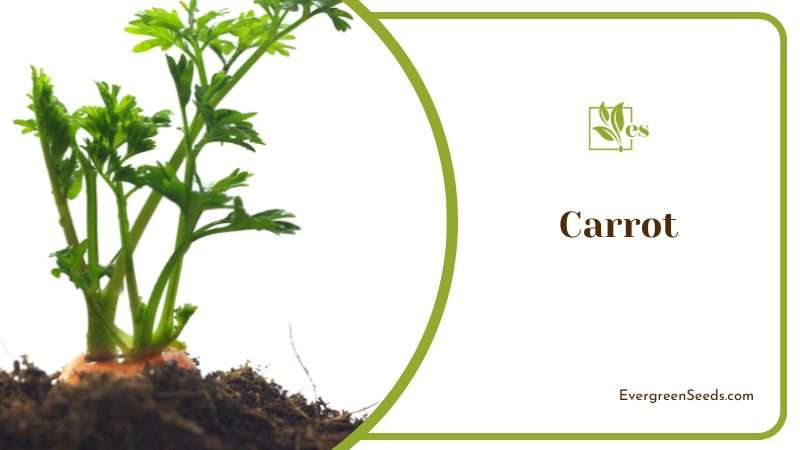
This is because they have the same leafy structure and density as the plant fennel. When the carrot plant is in the process of growing, the actual carrot is deep within the soil, so all we can see is the top. The uncanny resemblance is sure to fool anyone who doesn’t know what is growing there.
When finding differences, the same can be said here: trust your nose. Carrot plants have a sweet scent to them that is very pleasant for the nose. You can tell just from one sniff that this is a carrot plant because of how strong the smell is. However, this is a stark contrast to the anise-like smell that fennel exudes and is most famous for.
Carrot tops have the same dense foliage as fennel. However, fennel appears to be sparse in comparison to the thick leafy tops of carrots.
Of course, this is again something that someone with a trained eye and experience would notice. Don’t worry if you can’t figure out if the plant growing in your garden is a carrot or fennel, as, unlike hemlock, carrot tops are completely edible.


